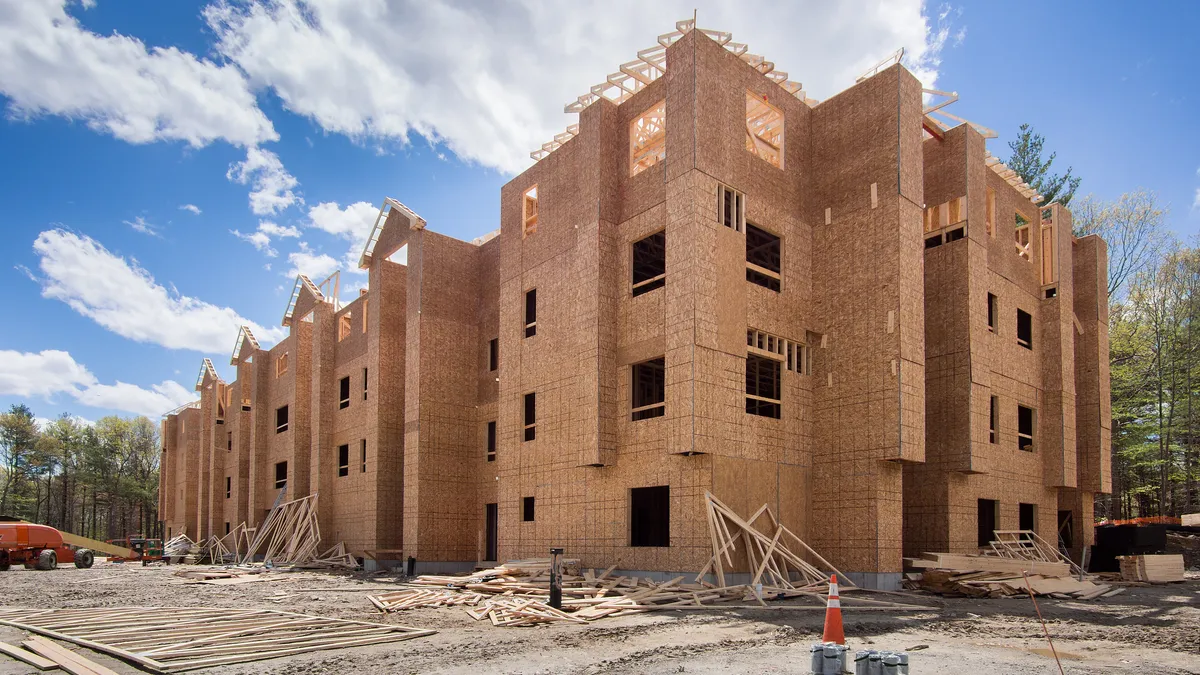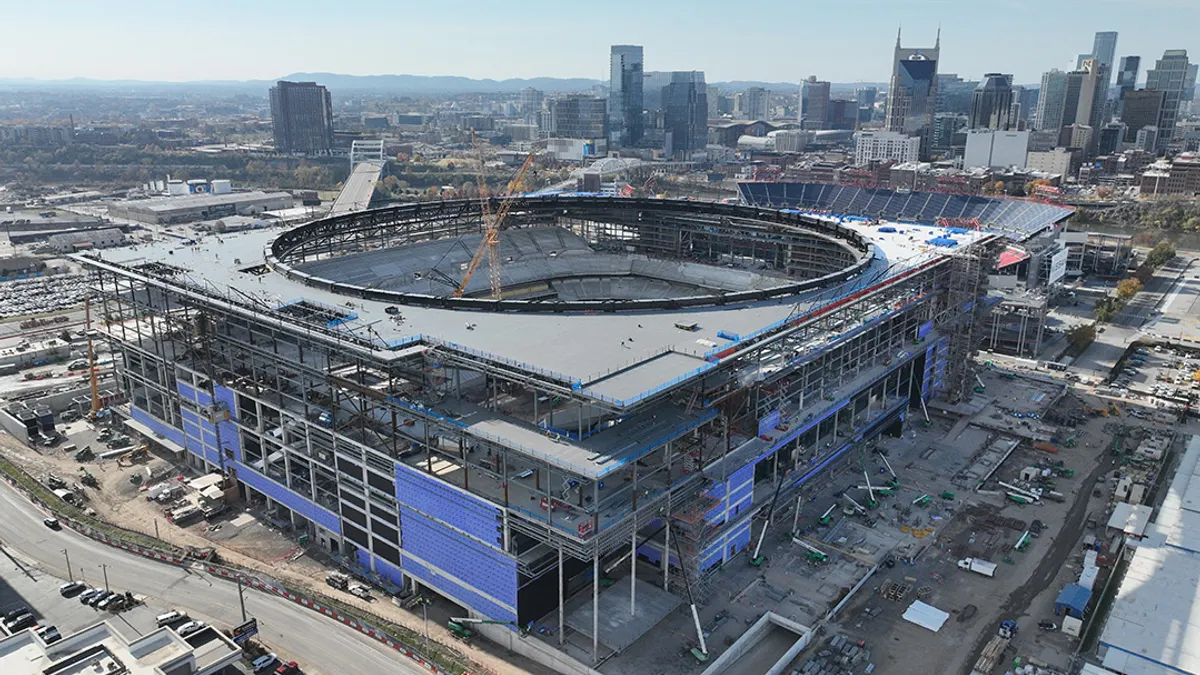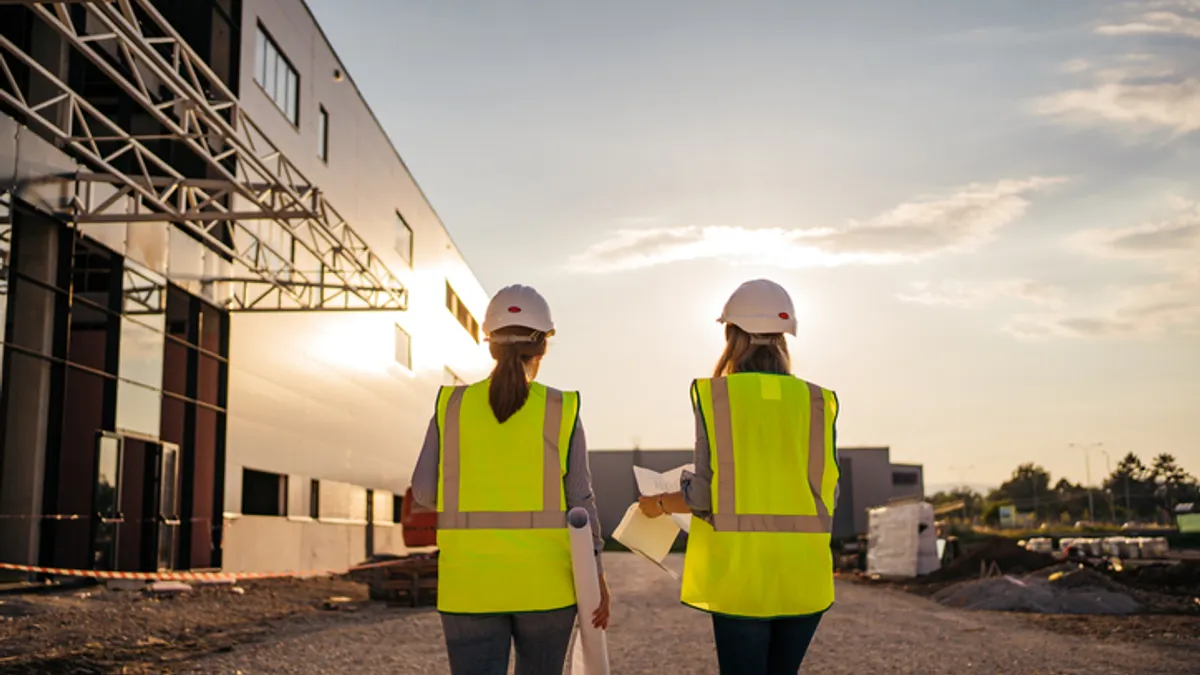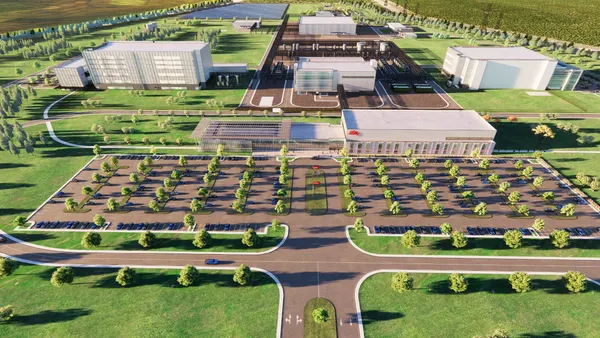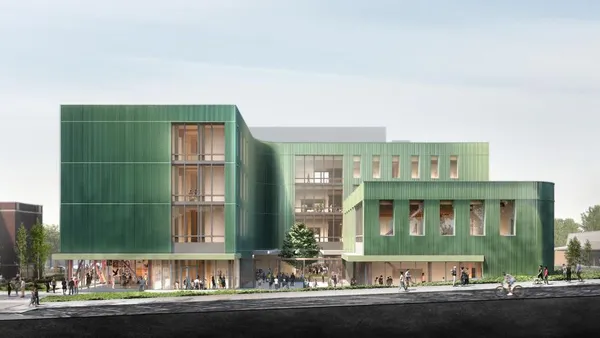Earlier this week, HUD and the U.S. Census Bureau again reported strong numbers for multifamily construction.
Starts for buildings with five or more units jumped 11.6% month over month in July and rose 27.4% year over year to a seasonally adjusted rate of 470,000. Multifamily developers finished an annualized 383,000 apartments in buildings with five or more units, a 28.8% YOY drop and a 2.8% month-over-month decline.
Overall housing starts came in at a seasonally adjusted annual rate of 1.4 million in July — a 12.9% increase YOY and a 5.2% increase compared to the revised June estimate. Single-family home starts clocked in at a rate of 939,000 homes, a 7.8% YOY increase and a 2.8% month-over-month increase.
On the surface, the multifamily performance, which had the second-highest number of starts for any July in the past four decades, is much stronger than was expected at the beginning of the year.
“This follows the Census reporting that June 2025 multifamily starts were the fifth-highest for any June since 1990,” rental housing economist Jay Parsons wrote on LinkedIn.
But Parsons and other observers are skeptical. “The numbers don't make a lot of sense,” Jay Lybik, senior director of market research at Milwaukee-based apartment owner and manager Continental Properties, told Multifamily Dive.
Not matching the environment
Chris Nebenzahl, vice president of rental research at Irvine, California-based John Burns Research & Consulting, said his team has been monitoring the Census numbers over the past five months and has noticed an issue.
“The Census data doesn’t represent what we are seeing from our clients, third-party data providers that we subscribe to, or what our surveys are saying,” he said.
Nebenzahl said most of these sources indicate that multifamily starts are down 8% to 10% year over year. “Given the capital markets and uncertainty in the economy, I don’t believe there’s been an increase YOY in multifamily starts,” he said.
Ryan Davis, CEO of Dallas-based consulting firm Witten Advisors, told Multifamily Dive the 42,000 total multifamily starts in July were “laughable.”
“Equity for new development went on a pause after [President Donald Trump's tariffs were first enacted on] April 2, 2025, and given that the industry is influenced by these numbers, I suspect that pause will now continue into next year,” Davis said. “Add to that tariff-driven/uncertainty pause is the fact that very few deals can pencil.”
Parsons said that the current new construction numbers surpassed starts in the “era of record demand and cheap debt” in 2021 and 2022, and didn’t align with the macroeconomic environment, including the ongoing high interest rates.
“In fairness, I know the Census is resource-constrained, so I'm not poking at the team there at all,” Parsons said. “But something has got to change because our policymakers who rely on Census data are being fed critical misinformation.”
The gold standard
But not everyone agrees that there are issues with the Census numbers.
While National Association of Home Builders Chief Economist Robert Dietz said he was surprised by the housing starts numbers this year, they are consistent with what the association’s members told him in January.
“We also heard claims in 2021 and 2022 that the Census data was not consistent with what some were seeing [because they were expecting a big drop before what we saw in 2024],” Dietz said. “This was due to the fact that there were outsized gains in smaller markets not measured in detail by other data providers.”
Dietz thinks the same trend is occurring this time. He points to trailing data over the last four quarters that shows permits down in large core counties, flat in small metros and up in exurbs. Overall, apartment developers pulled permits for a seasonally adjusted rate of 430,000 apartments in buildings with five units or more in July, a 1.8% YOY decrease and a 9.9% decline compared to June.
“I wonder if when growth for multifamily is in lower-density, smaller areas, the Census numbers tend to run counter to other numbers,” Dietz said.
Many private sources are now tracking construction data, but Dietz still relies on the government’s numbers.
“Census Bureau data is the gold standard,” Dietz said. “I would need to see a lot of evidence to be convinced otherwise.”
Click here to sign up to receive multifamily and apartment news like this article in your inbox every weekday.



